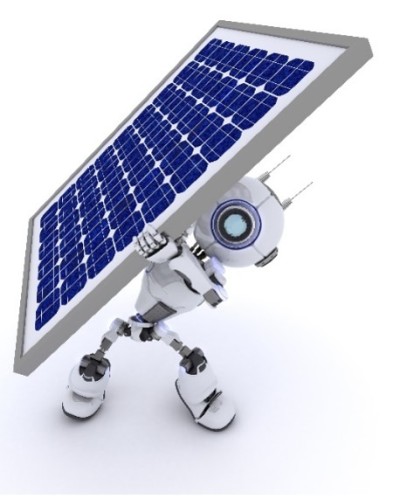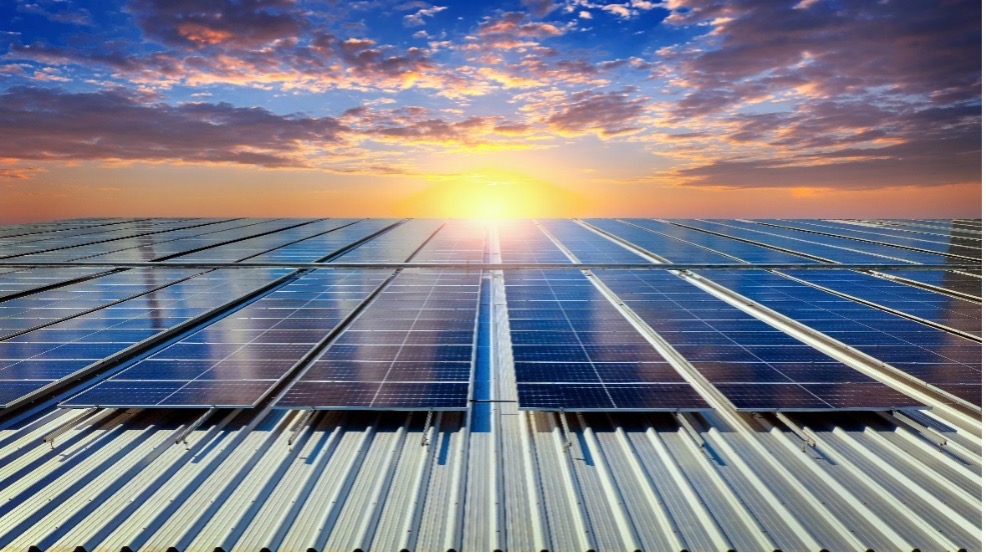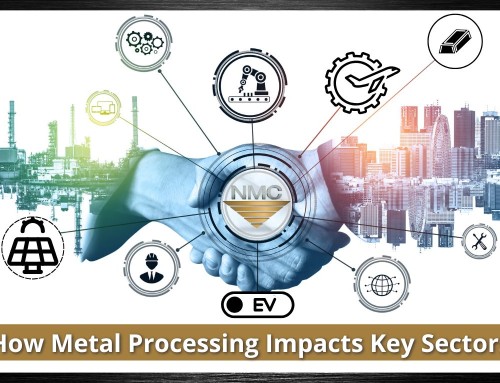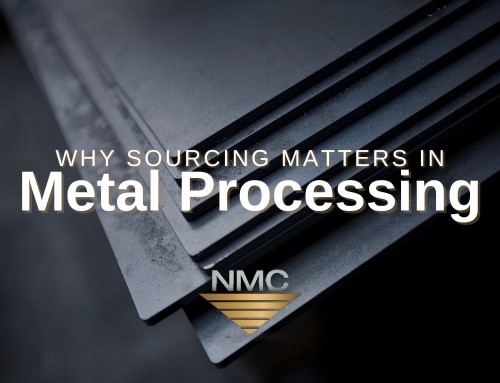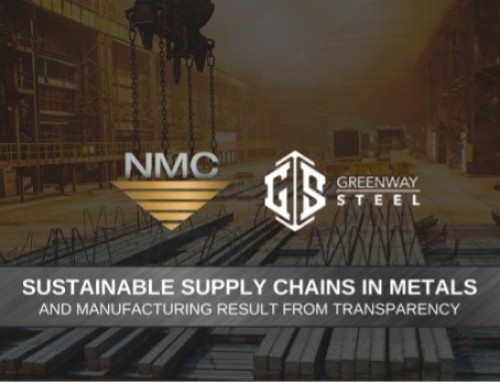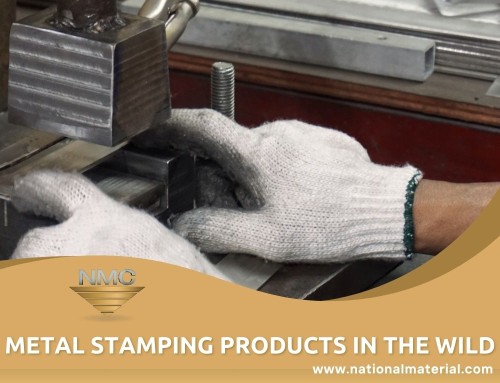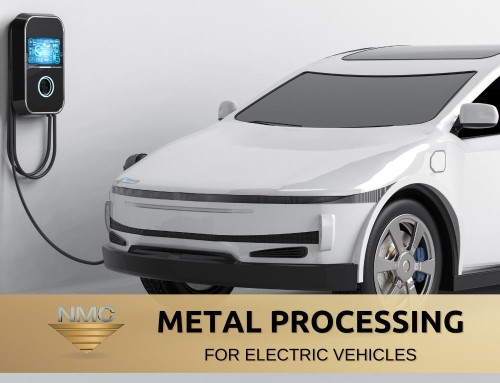Your solar farm is now operational, with gleaming rows of panels basking in sunlight. But are you maximizing your investment? The secret lies in the robust solar tracking industry components that keep your solar trackers moving smoothly and efficiently while withstanding the constant battle — relentless sun, harsh weather, and the pressure to maximize your energy output.
But which material should you choose? Steel or aluminum? Each offers unique advantages, and the wrong choice can impact your tracker’s performance and lifespan. Selecting the appropriate material can seem like a daunting task. As a leader in steel processing and supply-chain management, National Material Company will help you choose the best material for specific components, ensuring your trackers operate flawlessly for years and your solar farm achieves peak performance.
What are Solar Trackers and Why Do We Need Them?
Envision a world where your solar panels could constantly face the sun, soaking up every last ray of energy. That’s the power of solar trackers – these innovative systems are like tiny robotic assistants for your solar facility, constantly adjusting the angle of your panels to maximize sunlight exposure throughout the day.
But why is this constant adjustment so crucial? The more directly sunlight hits a surface, the more heat it absorbs. So, the angle of sunlight directly impacts how much power your panels generate. A panel facing the sun head-on captures the most energy, while tilted panels see a decrease in output.
Solar trackers ensure your panels are always basking in the most optimal light by constantly tracking the sun’s movement across the sky, east to west. Research indicates this can substantially increase power generation, with up to 30-40% more energy produced than stationary panels. This translates to a more productive solar farm and a bigger return on your investment.
How Does Steel for Solar Tracker Manufacturing Help Us?
- Champion against corrosion. Unlike some materials that succumb to rust and leave unsightly stains, galvanized steel stays strong and keeps your installation looking sharp. The zinc coating acts like a shield, preventing rust and ensuring your investment thrives for years to come.
- Durability against harsh conditions. Solar panels often face harsh conditions, from scorching sun to fierce weather. The zinc coating in galvanized steel is like a protector’s UV shield, standing strong against the sun’s harmful rays. This resilience makes it perfect for withstanding the elements, whether your solar farm basks in a desert or endures hurricane-force winds.
- Great conductor of heat. This might sound surprising, but it’s a hidden benefit of solar power. By allowing heat to flow freely through the solar panel mounting bracket structures, galvanized steel helps your panels operate at peak efficiency and not overheat.
Which Parts of the Solar Installations are Galvanized Steel?
Here is how specific steel components are used in solar projects, their applications, and the crucial metal processing techniques that contribute to the efficiency and durability of solar installations.
Piles and Earth Screws
When building a solid foundation for your ground-mounted or carport solar project, driven piles are your secret weapon. These piles are crafted from sturdy steel beams in various sizes, like 6×7 or 6×12. To ensure they last for years to come and can withstand the elements, these piles undergo a galvanizing post-process treatment. This extra step protects them against rust and other environmental factors, keeping your entire solar infrastructure stable and secure.
Earth screws, on the other hand, are tubular steel components with 3 to 4 inch diameters. They offer a quick and easy installation solution, especially for projects where harsh ground conditions might slow things down.
Tubular
The hidden gem of solar tracking systems is galvanized steel for tube applications for solar tracker manufacturers. These crucial components come in round or square shapes, offering a range of diameters from 3.5 to 5 inches and a 10”–12”-gauge thickness. They act as the backbone for the solar panels, providing structural support to track the sun’s path throughout the day. Beyond tracker systems, galvanized steel torque tubes can also be found in some rooftop installations, where their hollow form helps secure solar racking and brackets for the solar tracking industry efficiently to the roof — a vital need for optimal performance.
Beams
The framework supporting your solar carport relies heavily on finished steel beams. These 6×7 or 6×12 beams come in various sizes to accommodate project needs. Like other solar components, these beams go through a galvanization process after manufacturing. This extra step protects them against rust and harsh weather, ensuring they remain strong and dependable for years. In simpler terms, these galvanized steel beams act as the bones of your carport, providing a sturdy foundation for your solar panels.
What are the Benefits of Using Aluminum for Solar Tracker Manufacturing?
What makes aluminum such a great fit to solar tracker industry components? Let’s explore the key advantages.
- Aluminum is lightweight. Compared to heavier materials like steel, aluminum panels are easier to install and transport. This translates to lower shipping costs and reduced carbon emissions.
- Durable and boasts excellent corrosion resistance. Aluminum withstands harsh weather and lasts for years, maximizing long-term energy production.
- High Thermal Conductivity. Aluminum excels at keeping it cool. This might seem counterintuitive for capturing sunlight, but it’s crucial! Aluminum’s high thermal conductivity allows it to efficiently dissipate heat. This prevents overheating — a major enemy of solar panel efficiency. Some aluminum panels have built-in heat sinks, working with aluminum’s natural heat dissipation to keep your panels operating at peak performance.
- Environmentally friendly. Finally, aluminum is 100% recyclable, requiring notably less energy to produce. Choosing aluminum means a smaller carbon footprint and an eco-friendlier approach to capturing solar energy. You’re not just harnessing the sun’s
Which Parts are Aluminum in Solar Installations?
Aluminum’s lightweight nature and other properties make it a key player in solar tracking systems, contributing to efficient movement and performance. Here’s a closer look at how aluminum shines in these components:
Solar Clamps and Clips
Some solar tracker industry components rely on weight as a critical factor. The components that securely hold the solar panels on the tracker’s arms are made of aluminum. Lighter aluminum clips and clamps for solar tracking industry put less strain on the tracker motors, reducing the overall weight of the moving assembly. Additionally, aluminum’s natural corrosion resistance ensures that these solar tracking industry components can withstand harsh outdoor conditions without rusting.
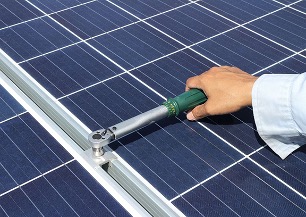
Bearing Housing
The bearing housing is an essential component of the tracker system. It encases the bearings and enables smooth rotation. Proper lubrication and heat dissipation are crucial for the bearings to function optimally. Aluminum is preferred for bearing housing due to its good heat conductivity properties. It helps transfer heat away from the bearings, which prevents overheating and ensures smooth operation. Galvanized steel is also used when a balance between heat dissipation and structural strength is needed.
Choosing the Right Material for Your Solar Tracker Needs
When choosing between aluminum and steel for solar tracking industry components, the decision depends on specific needs. Aluminum excels in lightweight parts like tracker arms, offering smoother operation and reduced motor strain. Steel is best for structural components, providing strength and durability for tracker frames and supports.
Budget is another factor to consider. Generally, aluminum is a more cost-effective option, especially for non-critical solar tracker industry components. However, galvanized steel’s long-lasting performance and minimal maintenance needs can sometimes outweigh the initial cost difference.
Leading Manufacturer of Steel and Aluminum for Solar Tracker Industry Components
Here’s where National Material Company (NMC) steps in as your trusted partner. NMC’s team of experts possesses a deep understanding of aluminum and galvanized steel and extensive knowledge of solar tracker systems. They offer comprehensive consultations to help you select the optimal material for each component, ensuring your tracker achieves peak performance while staying within budget.
Don’t settle for anything less than the best. Contact NMC today and let our experts guide you towards the perfect material combination for your solar tracker project
More About National Material Company
NMC is a part of the National Material Limited Partnership steel division, one of the largest independent steel service centers in the United States. NMLP ships over 2,000,000 tons of steel annually – operating steel processing facilities across North America. These locations offer a key advantage for our customers regarding logistics and cost.
If interested in their services, please visit NMC’s website at nationalmaterial.com, call (U.S.) 847-806-7200, or email nmcquotes@nmlp.com. They will be happy to discuss how they can serve you.

